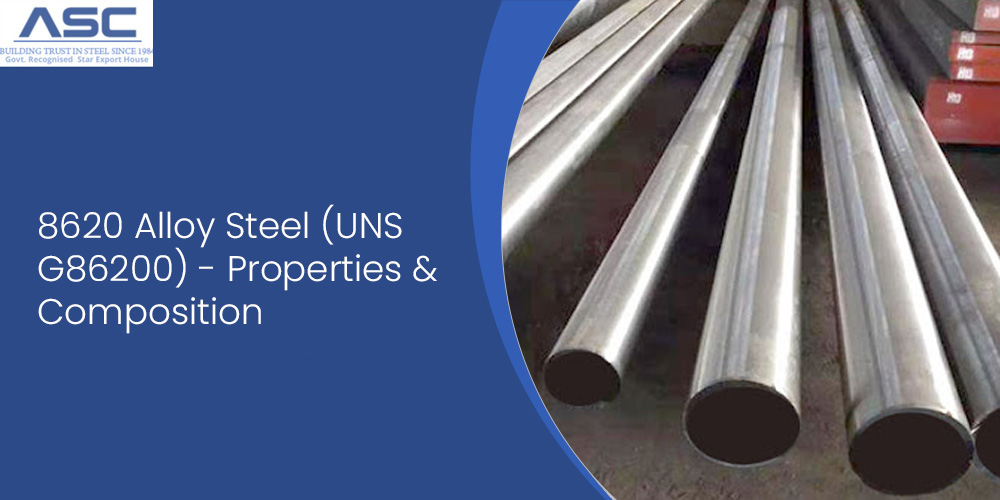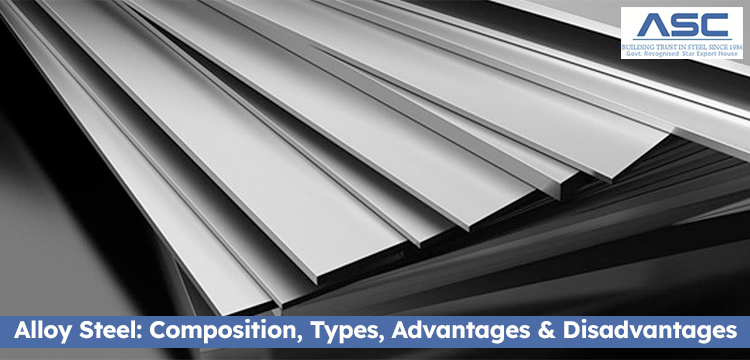What Is Alloy Steel? Characteristics And Applications
by AMC
Posted on April 30, 2024 at 03:57 PM

Alloy steel is a versatile material that finds widespread use in construction and various industries. In this article, we'll explore what alloy steel is, its unique characteristics, and its diverse applications.
What is Alloy Steel?
Alloy steel is a type of steel formulated by combining iron and carbon with additional alloying elements like manganese, nickel, chromium, or copper. These alloying elements, comprising around 1.0% to 50% of the steel's total weight, impart distinct characteristics to the alloy steel, enhancing its performance in various applications.
Alloy Steel - Alloying Elements
Alloy steel's diverse properties stem from its unique composition, which often includes alloying elements that impart specific characteristics. Among these elements, manganese, chromium, molybdenum, and vanadium play crucial roles in enhancing alloy steel's performance across various applications.
- Manganese:
- Purpose: Adjusts heat treatment requirements, allowing for controlled cooling rates.
- Impact: Minimizes the risk of cracking during rapid cooling, improving the steel's hardenability.
- Application: Commonly used in structural steels, rails, and automotive components.
- Chromium:
- Purpose: Enhances corrosion resistance and modifies steel properties.
- Impact: Steels with higher chromium content (>11%) become stainless steel, exhibiting excellent resistance to corrosion.
- Application: Widely used in kitchen utensils, automotive parts, and aerospace components.
- Molybdenum:
- Purpose: Improves high-temperature properties, machinability, and corrosion resistance.
- Impact: Enhances ductility and hardness at elevated temperatures, contributing to better overall performance.
- Application: Found in tools, high-temperature applications, and marine equipment.
- Vanadium:
- Purpose: Improves hardness, abrasion resistance, and impact resistance.
- Impact: Restricts grain growth, enabling quenching at higher temperatures without sacrificing properties.
- Application: Used in cutting tools, gears, and structural components subject to wear and impact.
Classification of Alloy Steel
It is classified into two main categories based on the concentration of alloying elements: high-alloy steel and low-alloy steel.
High-Alloy Steel
High-alloy steel contains alloying elements with a concentration greater than 10% of the total steel mass. It offers exceptional strength, corrosion resistance, and heat resistance due to its high alloy content. This type of steel is commonly used in aerospace components, high-stress structural parts, and specialized machinery requiring superior performance.
Low-Alloy Steel
Low-alloy steel contains alloying elements such as chromium, silicon, manganese, and others, with concentrations below 10% of the total steel mass. It balances cost-effectiveness with improved properties compared to plain carbon steel, offering good strength and corrosion resistance. Low-alloy steel finds wide applications in automotive parts, construction materials, pipelines, and general engineering applications.
Types of Alloy Steel Based on Applications
In addition to classification based on alloy concentration, alloy steel is also categorized according to its applications. These categories cater to specific industrial needs, offering tailored properties for diverse use cases.
- Steel Structure: Steel structure alloy is primarily utilized in manufacturing machine parts and metal structures. It prioritizes flexibility and high strength, making it ideal for structural components. Typically, this type of alloy steel features a low to medium carbon content, falling under the low-alloy steel category.
- Alloy Tool Steel: Alloy tool steel is renowned for its use in producing cutting tools, stamping dies, and precision instruments. It boasts high hardness and corrosion resistance, essential for tooling applications. This category generally encompasses steels with a medium to high carbon content, including popular grades like SKD61 and SKD11.
- Special Alloy Steel: Special alloy steel encompasses steels with unique chemical and physical properties, tailored for specific industrial requirements. These steels often contain high concentrations of added elements, belonging to the high-alloy steel group. Their distinctive properties make them valuable in specialized applications where standard steel grades may not suffice.
Characteristics of Alloy Steel
- Mechanical Properties: One of the standout features of alloy steel is its superior mechanical properties. Compared to carbon steel, alloy steel exhibits significantly higher strength, particularly noticeable post-quenching and tempering processes. This enhanced strength makes it ideal for applications requiring robustness and durability.
- Heat Resistance: Alloy steel showcases remarkable heat resistance, maintaining its mechanical integrity even at elevated temperatures surpassing 200 degrees Celsius. This heat resistance is achieved through alloying, where elements with high concentrations are added to the steel composition. This property is invaluable in industries where materials must withstand high thermal loads.
- Physical and Chemical Properties: In addition to its mechanical prowess, alloy steel also excels in terms of physical and chemical properties. It possesses corrosion resistance, making it suitable for environments prone to rust and degradation. Moreover, alloy steel exhibits exceptional expansibility, allowing it to adapt seamlessly to temperature fluctuations without compromising its structural integrity.
Advantages and Applications of Alloy Steel in Construction
Let's delve into its distinct advantages and explore where it finds prominent use in construction and related industries.
Advantages of Alloy Steel
- Excellent Corrosion Resistance: Alloy steel boasts exceptional corrosion resistance, making it a preferred choice for structures exposed to harsh environmental conditions or corrosive substances.
- High Load-Bearing Capacity: Its superior strength and durability give alloy steel a high load-bearing capacity, ensuring structural integrity and longevity in construction projects.
- High Melting Temperature: Alloy steel can withstand high temperatures without compromising its structural integrity, making it suitable for applications where heat resistance is crucial.
Applications in Construction and Manufacturing
- Construction Projects: Alloy steel finds extensive use in construction projects, ranging from building frameworks to bridges and infrastructure elements, thanks to its robustness and corrosion resistance.
- Manufacturing Machinery and Automotive Components: The high load-bearing capacity and durability of alloy steel make it an ideal choice for manufacturing machinery parts, automotive components, and equipment that require strength and reliability.
- Shaft Production: Alloy steel is commonly used in producing various types of shafts, including forged rolls, motor shafts, and other critical components that require both strength and resilience.
- Gear Manufacturing: Its excellent mechanical properties make alloy steel a preferred material for manufacturing gears, ensuring smooth and efficient operation in machinery and automotive systems.
Conclusion
The advantages of alloy steel, including corrosion resistance, high load-bearing capacity, and heat resistance, make it a cornerstone material in construction and manufacturing industries. Its versatile applications across structural frameworks, machinery components, shafts, and gears highlight its importance in ensuring durability, reliability, and performance in diverse engineering and construction projects.
.jpg)
Alloy Steel vs. Stainless Steel
Alloy steel is a type of steel that is made by combining two or more different metals or elements to improve its properties. The specific combination of metals and their ratio can vary depending on the intended application and desired properties of the steel.

